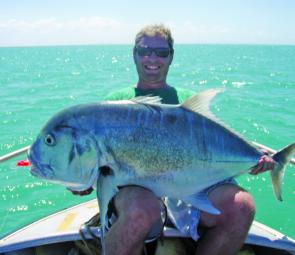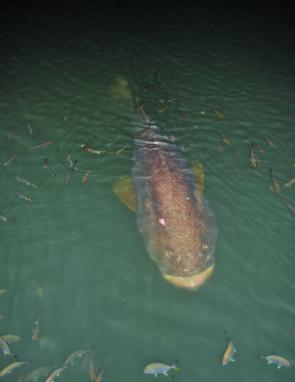The past few months we have imagined scenarios unfolding up and down the east and west coasts of Cape York Peninsula.
Now as we head into July, it might be time to decide on options relevant to the unfolding weather patterns. Dealing with the persistent trade winds this time of year is something every keen boat-based angler will have to do.
It never gets all that cold in Cape York except at a few inland centres and you will usually find locals starting to complain when the mercury drops below 20 degrees! Now if you can imagine the hard nuts up in the Cape donning their winter jackets for the first time in 12 months, have a thought for the fish.
Your best chance of a truly crisp morning will often be during this month and fish like the legendary barramundi will start to get a little skittish and sullen. Where a few months ago, fish were active right though the water column, growing fatter by the day, July can see them holed up in some deep stretch of river, refusing to eat anything that isn’t served up on a silver platter.
You have two choices here: the first is to start chasing fish which cope with cooler water temperatures and the other is to imagine what a barra would like served on its silver platter. Two things that come to mind are live baits fished in deep stretches or river adjacent to snags whilst the other is slow twitched (often rattling) lures fished at whatever depth has a chance of being a little warmer.
Spurred on by high pressure systems drifting across the Australian continent towards the east coast, the trade winds perform a quite dominant function in Cape York this time of year. Put simply, those on the prevailing coast (east coast, Torres Straight and Southern Gulf) can expect difficult inshore conditions. Whereas those down the west coast and in many of the sheltered bays facing north can expect offshore relatively calm breezes for much of July.
Learning to live with trade winds and alter your fishing accordingly is a set of skills acquired by many in the far north where the wind has a happy knack of blowing for weeks on end. But just like in so many places, there will often be a window in any given day where conditions ease and fishing becomes possible. If this isn’t the case a lee shore or inside a small creek or river is the place to be.
Knowing what to expect is half the battle and weather predictions are usually quite accurate out to about five days this time of year. Sometimes the weatherman can just press ‘ditto,’ in an attempt to stop repeating over and over: Cape York, scattered showers in the north with south to southeasterly winds 15-20 knots! But Cape York is a seriously large place and getting good local information and making use of websites like willyweather.com and bom.gov might paint a more detailed picture.
Waking up early morning is the key to enjoying the fishing this time of year. Early birds are likely to come across mackerel, trevally, queenfish and tuna schools out wide, so long as they are planning to be out not too long after daylight.
On the opposite end of the spectrum, the persistent breeze can be counteracted by heading to places where it doesn’t matter. Things have usually dried out up in the Cape by July. All those swamps, lagoons and hard to reach bits of river can be accessed where previously wet conditions made it impassable. Late afternoons spent luring a snaggy bank for saratoga and barramundi will be productive.
Especially for those heading north from more southerly climes, July can be fantastic month weather wise to hook the boat or trailer up and make the sojourn to the Cape. Cool weather and consistent southeasterly trade winds should keep the sweat and the biting insects at bay.
Reads: 1917
Gig GT landed in a small boat in a pocket of calm weather.

Pet groper waits for a fish frame at the back of the boat.

Looking across Frangipani Beach and tip of Cape York.




